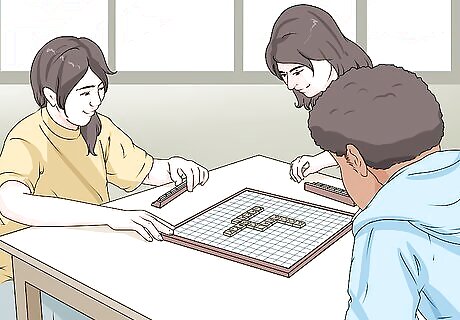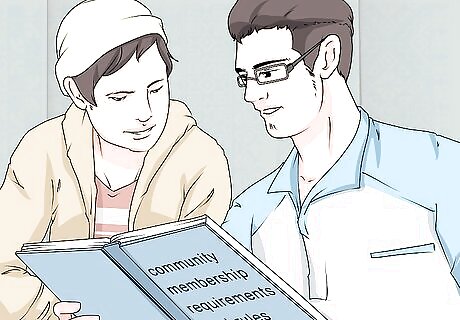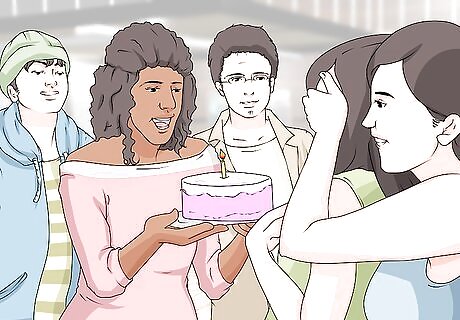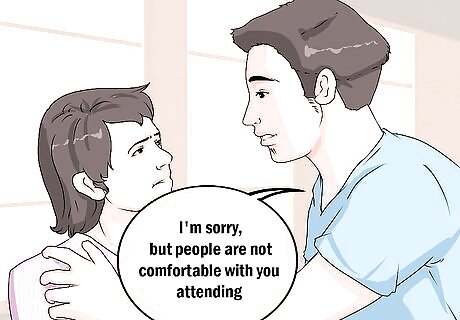
views
Establishing the Basics

Figure out what people need. People join a community for a reason. They need something that's provided by the social support and network found in a community. If you're trying to create a community, think about what people need and how you can fulfill those needs. Where are you trying to create a community? At work? At school? In your neighborhood? What do people need in these places that is lacking? Think about a niche that's missing a community could provide. Maybe people at your work tend to keep to themselves due to long hours. People may need to feel more camaraderie with co-workers. You could create a community based around a particular social event. For example, maybe you could start a board game club to help people interact outside of work.

Look for shared connections. Emotional connections help bring people together. In a community, it's important you share that connection with others. Think about what you share with the people around you. What common emotions or experiences do you have? Make these the focus as you work on forming a community. Think about what you have shared with those around you. People are often brought together by an experience or feeling that is unique to them. Look to people you're reaching out to and ask yourself, "What have we shared? What do we have in common?" For example, maybe you're trying to create a community in your dorm in college. All of your fellow students are likely away from home for the first time. You probably all experience feelings like loneliness, fear, and anxiety. Try to encourage people to share these feelings. This can foster a sense of community.

Choose the right leaders. Good leaders are vital to a community. As you gather members, or start forming a group or club, identify people who could potentially lead. Opt to place those who display the qualities of a good leader in power. Leaders have to keep the group in check and let people know when they're out of hand. Honesty, therefore, is important. You want someone who can tactfully address bad behaviors. Commutation skills are also key. Look for a leader who is easy to talk to and conveys information well. Leaders should be confidant. You want someone who is sure of themselves and unafraid to speak up. You should also look for someone who is committed. Choose someone who can be counted on to reliably show up to meetings, day in and day out. Inspires and motivates others. Builds relationships. Innovates and displays technical expertise.

Establish symbols. A symbol seems simple, but community members often bond over symbols that help them identify with the community. Look at how people who love a certain sports team take pride in the team's logo and color. Try to think of some kind of symbol, color, or inside joke to help your community bond. For example, if you're doing a weekly trivia night at work, try having team colors everyone should wear.
Gaining Community Members

Have standards for membership. While standards sound exclusive, they're actually a way to foster a sense of belonging. You want to gather people with similar goals, opinions, and perspectives. Think about the kind of members your community needs and how to establish rough standards. What are the boundaries for your community? How to people become part of the community and how do you keep the community somewhat exclusive? Boundaries are often related to a feeling of emotional safety. For example, if you're creating a community for college students, you may want to make it only for college students. This way, people will not feel uncomfortable sharing their feelings about issues unique to being a student. You should also have requirements for personal investment. If a community is going to thrive, people need to be dedicated. If you're, say, starting a book club, have a rule that you can only miss a set number of meetings.

Gather like-minded people. Look for people with the same views and opinions. You can create a loose community by identifying people with similar wants, needs, and feelings and introducing them. Be on the lookout for people who could fit in to your community and try to bring them into it. For example, say you're trying to create a community of friends at work. If you know someone from accounting with the same sense of humor as someone from sales, ask them both to get a drink with you after work.

Organize events. Community members bond through shared experiences. Bring people together to celebrate, socialize, and interact. This can help foster a sense of community and help you find more members. For example, if it's someone in your dorm's birthday, have everyone go out to celebrate that person's birthday.

Push for meaningful conversations. Strong social connections between members is important to any community. When going out with others, encourage meaningful connections. Try to forego small talk and have people open up to one another. Oftentimes, certain activities can encourage meaningful conversations. Say you're a teacher trying to create a strong community for a creative writing class. Instead of a conventional ice breaking activity, have everyone share something slightly more personal like their first memory. Oprah Winfrey Oprah Winfrey, Entertainment Mogul Create community through human connection and by finding common ground. "No matter who we are or what we look like or what we may believe, it is both possible and, more importantly, it becomes powerful to come together in common purpose and common effort."
Keeping a Community Strong

Make decisions together. Every group will undergo changes. As you need to make decisions, have meetings where everyone has a say. Have some kind of system in place to make decisions together. For example, everyone can share their opinion and you can then vote. For example, if you're hosting a book club, let everyone share their ideas about what book to read next.

Weed out bad people. Unfortunately, communities can sometimes attract negative members. In order to keep a community strong, watch out for people who rub others the wrong way or who simply do not fit in with the dynamic. If someone is causing problems or drama, you can politely let that person know they're no longer welcome in the community. For example, if someone who attend your book club is regularly late and rude to other members, it's okay to have that person stop coming. Say something like, "I'm sorry, but people are not comfortable with you attending because it seems like you can't prioritize this right now."

Allow equal participation. Communities should be a space where everyone can share. In a community , it's important to encourage everyone to participate equally. Make sure everyone has a say in decision making and that no one feels shut out. For example, in a classroom setting do not call on the same students over and over again. Encourage the students who are normally shy to raise their hands and share.

Share your emotions. If you're the one trying to create a community, people need to feel close to you. To help encourage feelings of closeness, be open about your own feelings and emotions. As you encourage people to share things about themselves, always be willing to share in return. For example, if you ask someone how they're feeling about a new stressor at work, be willing to share your own feeling as well. A new boss or change in company policy can be stressful, so be willing to share your own personal experiences with stress.

Be kind to your members. Make sure people in your community feel valued. Doing small, kind things for members will keep your community strong over time. It will also remind people of the benefits of being part of a community to begin with. For example, if a community member is sick, stop by their place and help them with some chores. If someone is having a rough week, have everyone sign a card for that person.

















Comments
0 comment